The Urban Lens: Travel back to the gritty Meatpacking District of the ’80s and ’90s
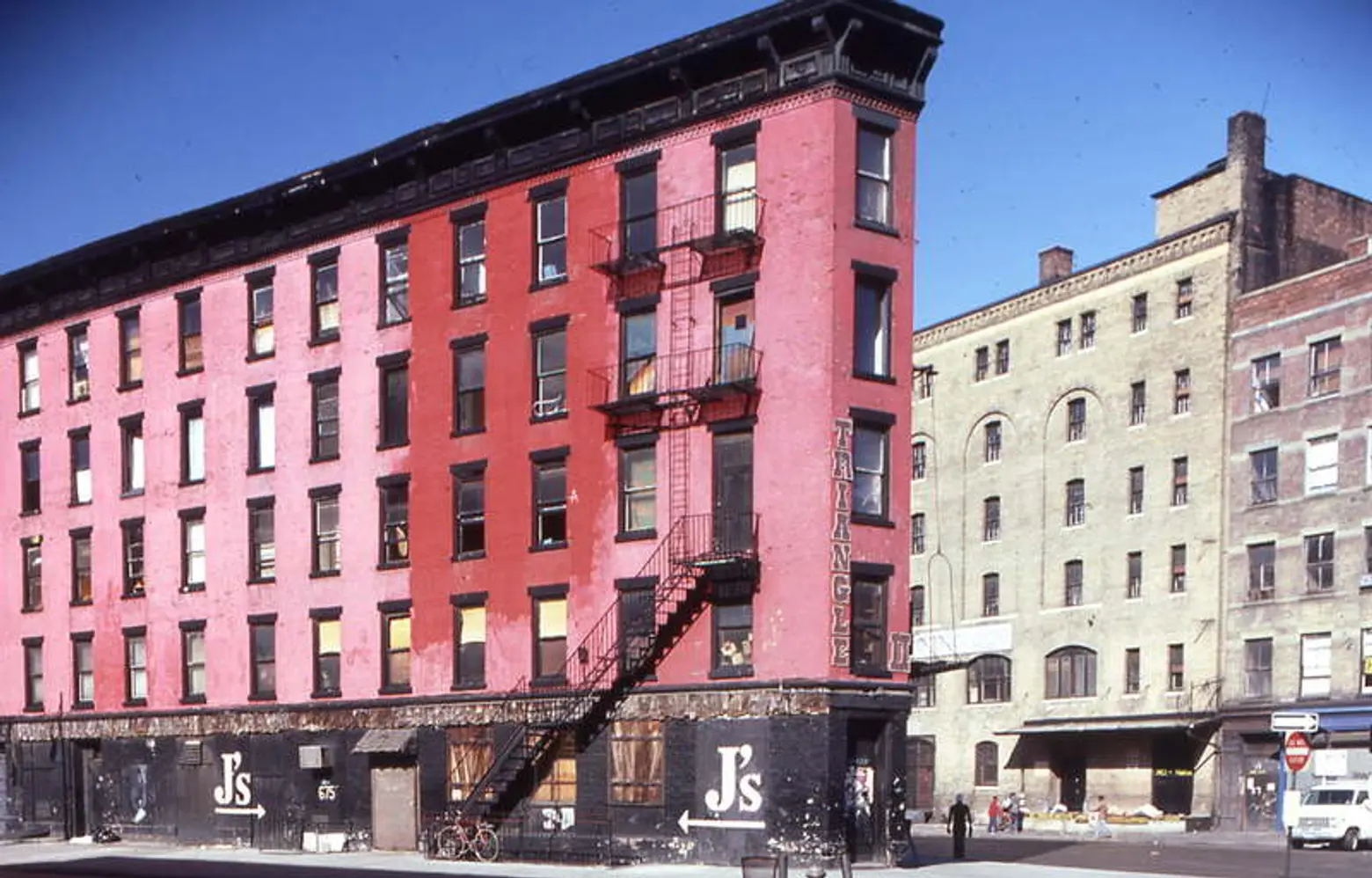
6sqft’s ongoing series The Urban Lens invites photographers to share work exploring a theme or a place within New York City. In this installment, the Greenwich Village Society for Historic Preservation shares archival images of the gritty Meatpacking District from the 1980s to early 2000s. Are you a photographer who’d like to see your work featured on The Urban Lens? Get in touch with us at tips@6sqft.com.
“Few parts of New York City have transformed as dramatically in the last decade or so as the Meatpacking District. Changes in the area are physical as well as spiritual. What was once a deserted ghost town by day, nightlife, sex club, and prostitution hub by night, and bustling workaday center of the Meatpacking industry from early morning to noon is now a glitzy, glamorized center of shopping, dining, tourism, strolling, and arts consumption,” says Andrew Berman, executive director of the Greenwich Village Society for Historic Preservation. The organization recently released a collection of archival photos of the neighborhood’s post-industrial grit, “before the Whitney, before the High Line, before Apple and Diane von Furstenberg, even before Sex and the City discovered the neighborhood.” Ahead, 6sqft shares these images, from the 1980s to the mid-2000s, which document the major transformation that’s taken place in just the past decade.
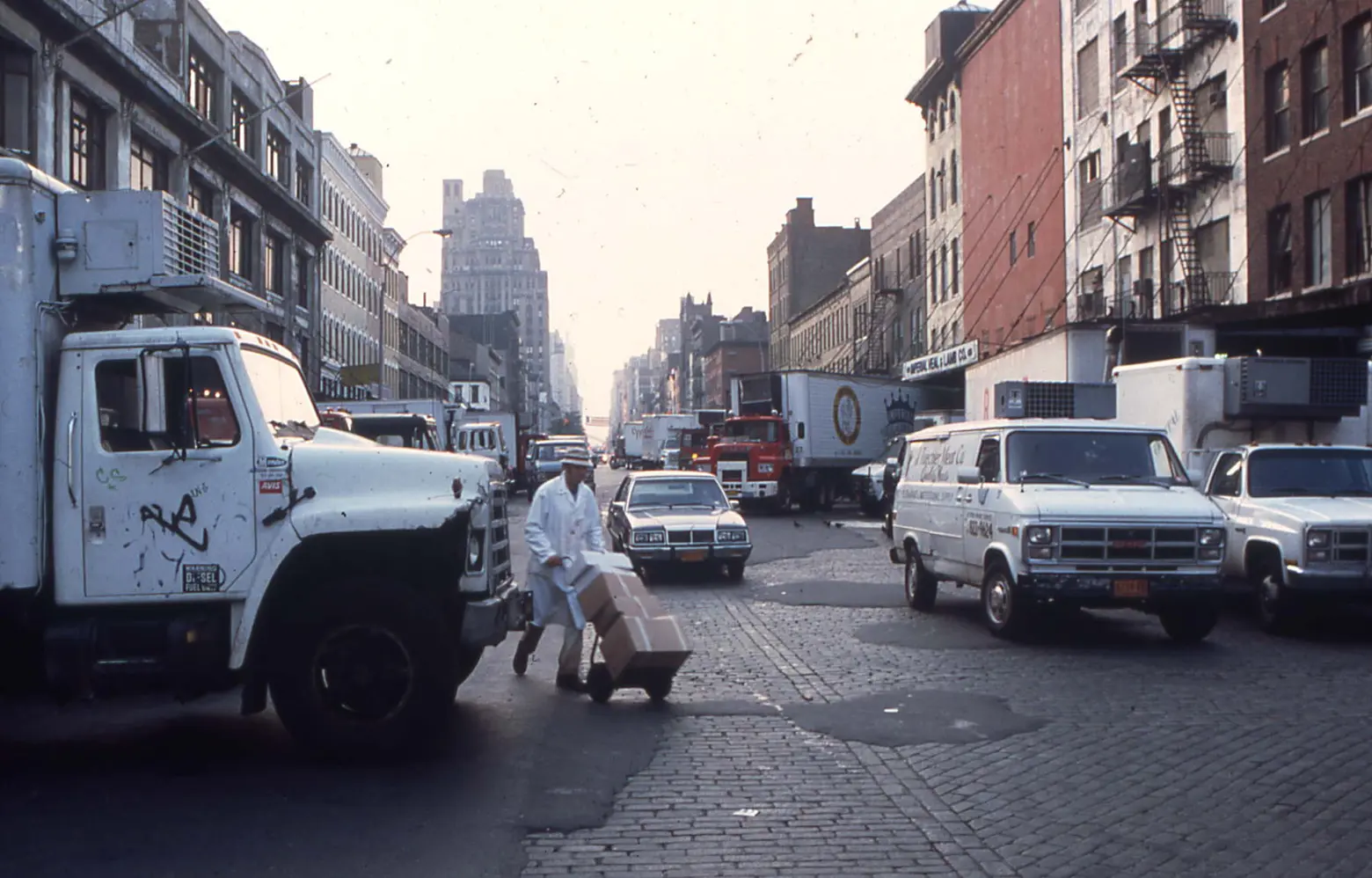
↑ 14th Street in the 1980s
Berman points to longtime landholder Bill Gottlieb’s death in 1999 as spearheading “waves of change” in the area. Gottlieb bought the Keller Hotel, a former seamen’s inn at 150 Barrow Street along the West Side Highway, in 1985 for $1 million and then spent the next 14 years “quietly amassing an empire of run-down tenements, abandoned warehouses, and weedy vacant lots,” as the Times noted. He was known for never selling or investing money in his properties, so that when he passed away his portfolio of 100+ properties that stretched from the Lower East Side to West Village was remarkably intact, albeit a bit rundown. Up until 2012, his real estate empire was locked in a family legal battle, but five years ago, his nephew was able to begin selling the sites off, accelerating gentrification.
However, Berman also reminds us of GVSHP and others’ “long fight to get much of the area landmarked,” preserving a good chunk of the neighborhood’s character. For example, the Gansevoort Market Historic District, which covers much of the Meatpacking District, was designated by the Landmarks Preservation Commission in 2003.

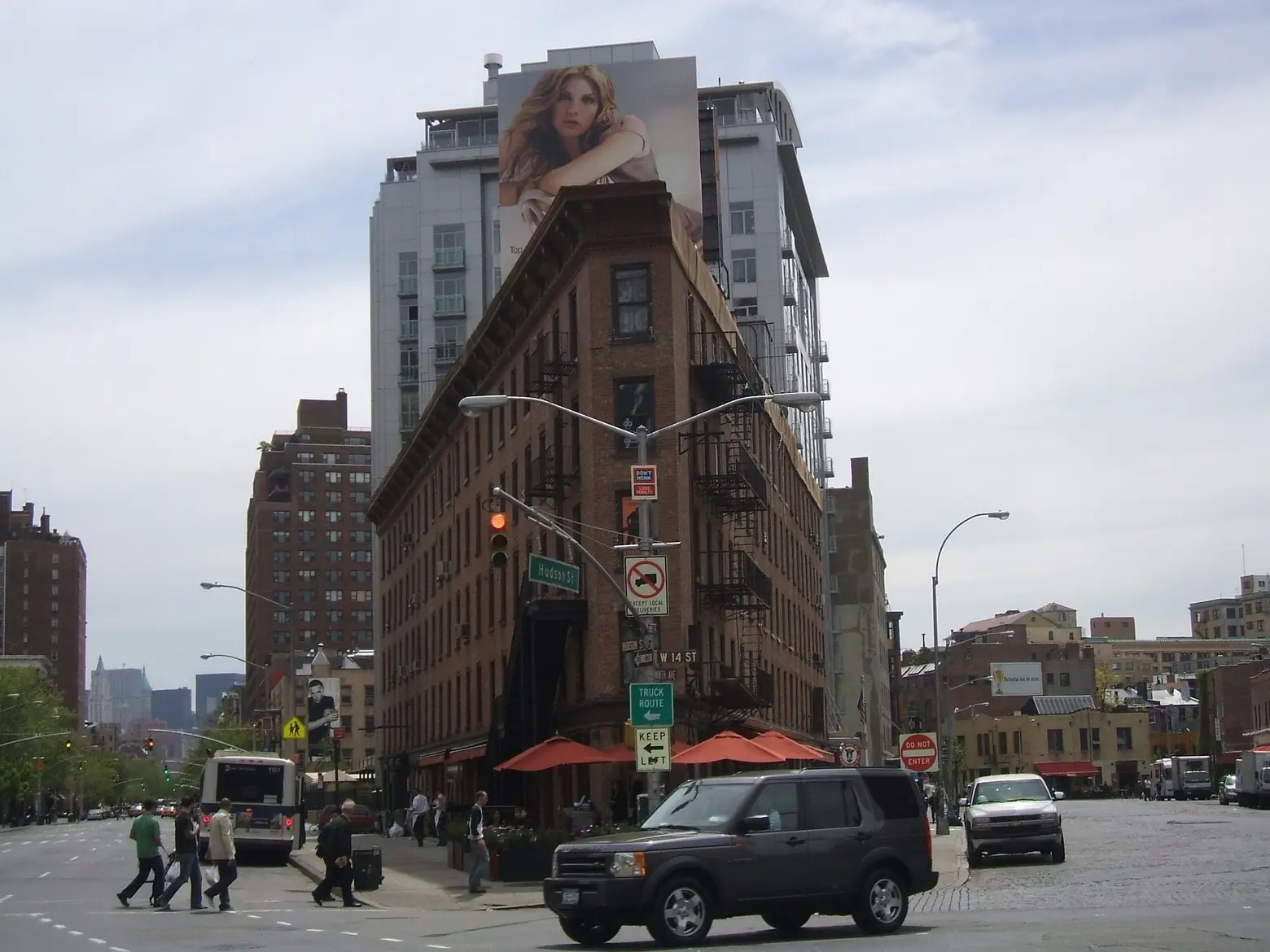
↑ The Triangle Building: In the 1980s, when it housed sex clubs (top) and in 2006 (bottom)
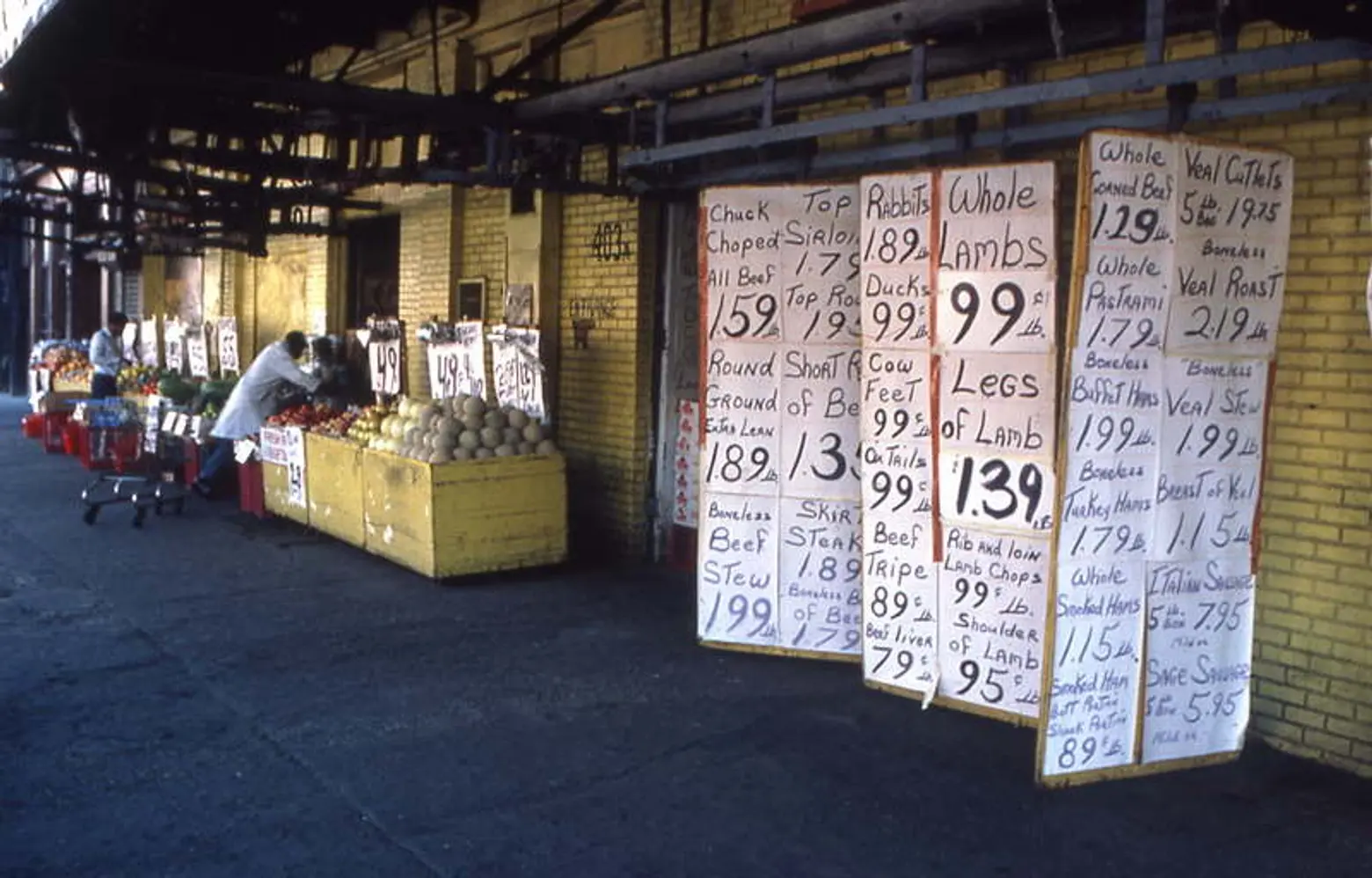
↑ 403 West 14th Street in the ’80s; it’s now home to the Apple store and Hugo Boss.
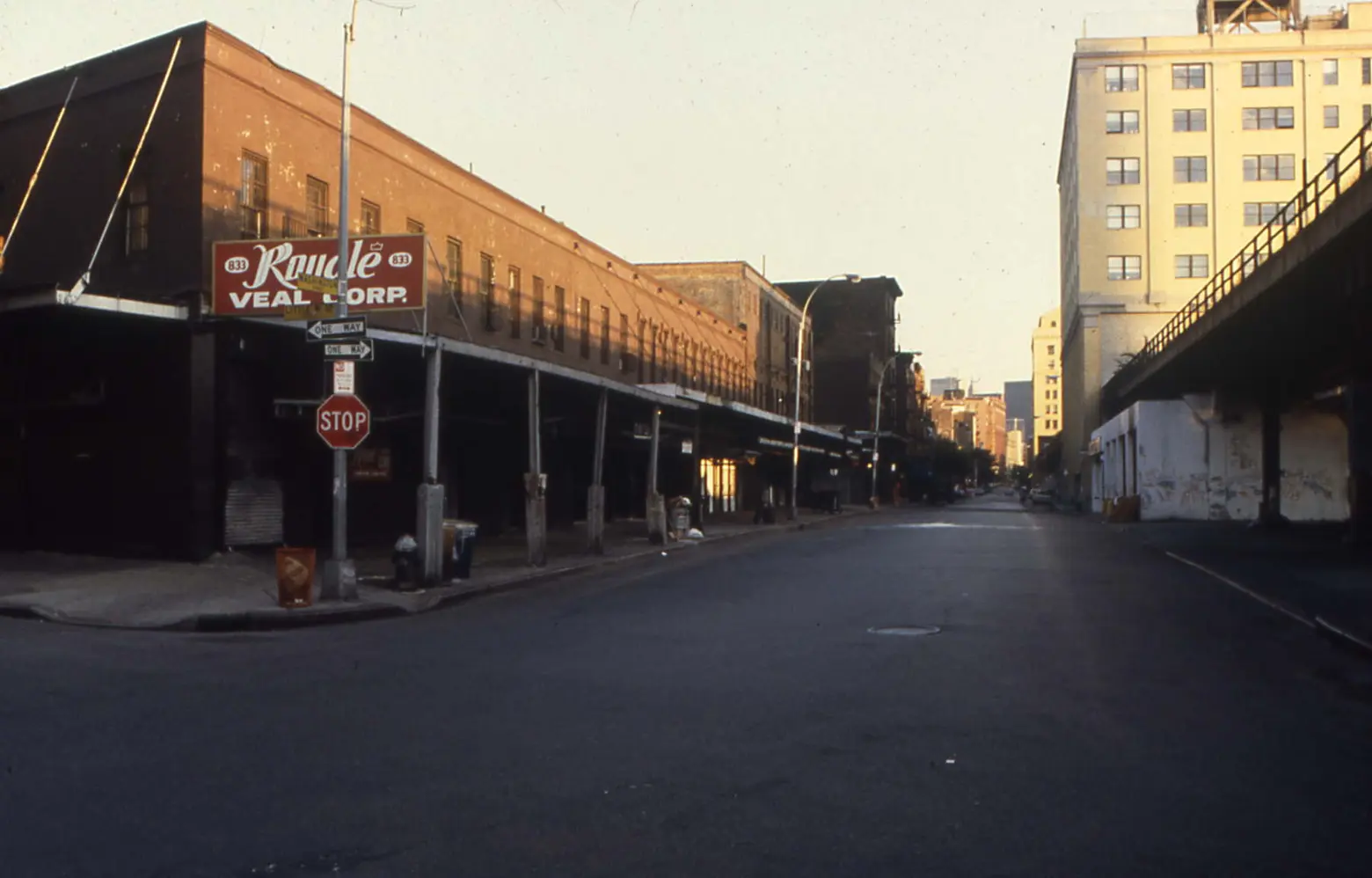
↑ The view up Washington Street at Little West 12th Street in the ’80s. It “shows just how eerily quiet and empty these streets could be in the middle of the day,” says Berman.
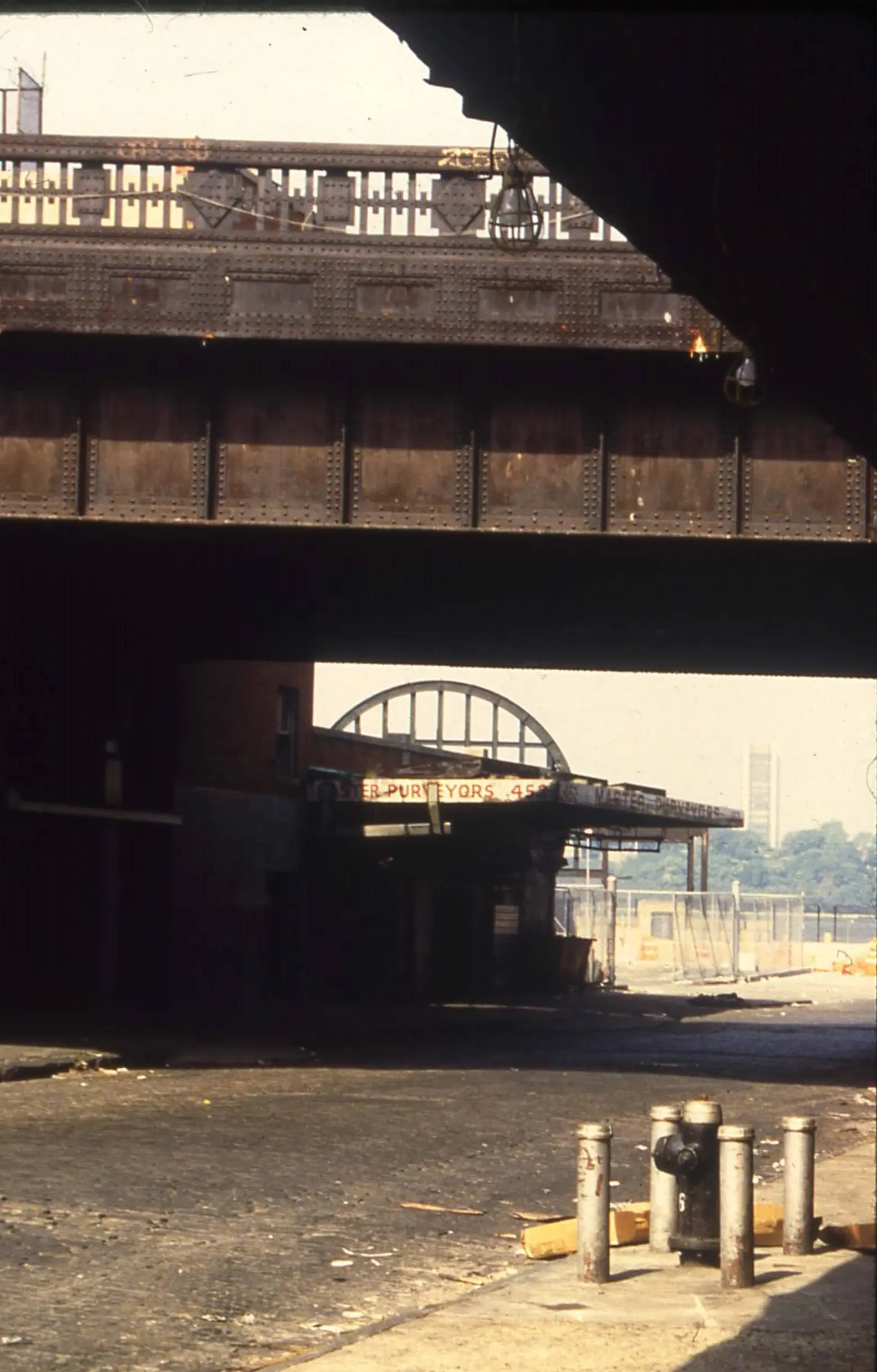
↑ West 13th Street looking west to Pier 54, Master Purveyor, and the High Line ca. 1990.
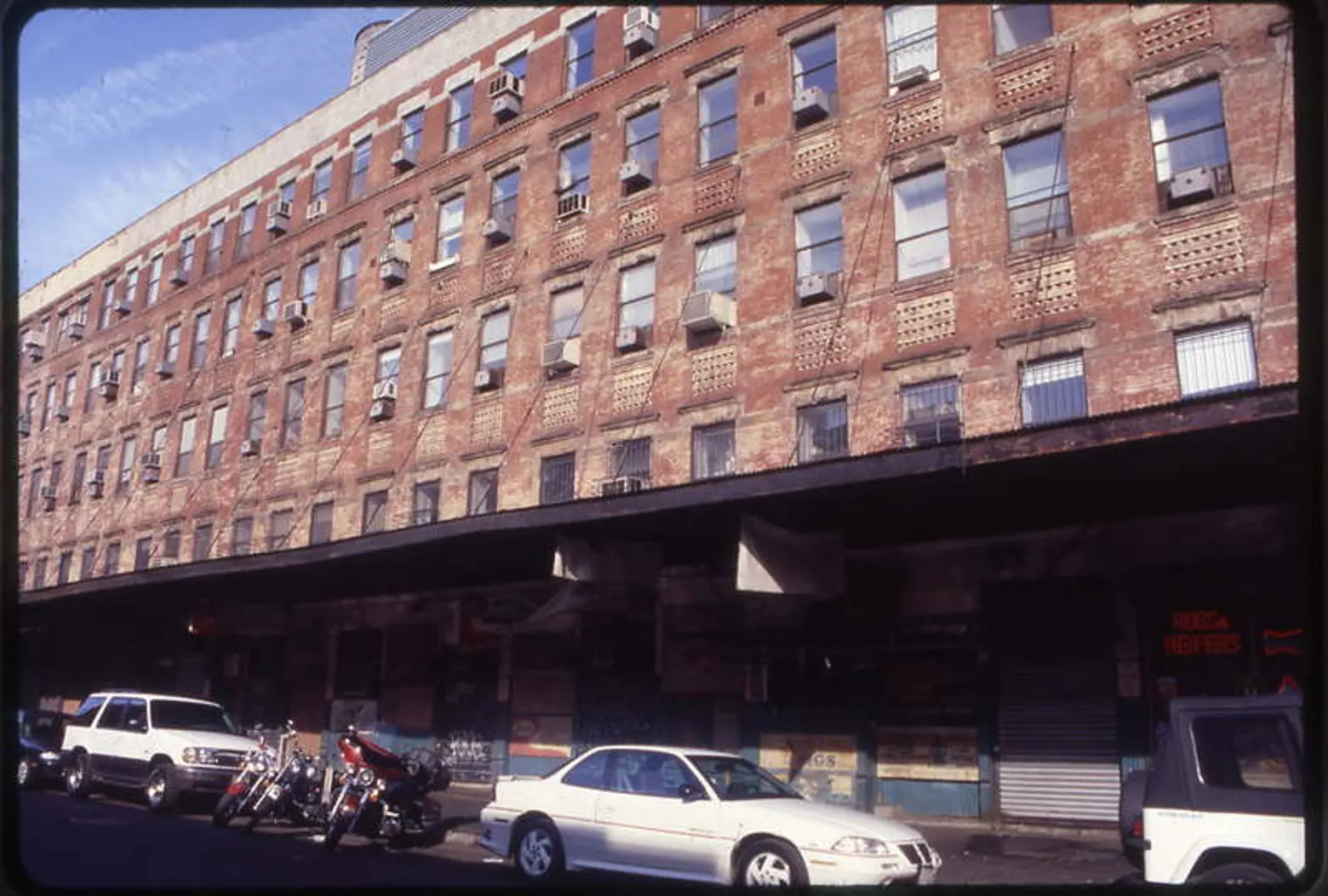
↑ 859 Washington Street in the early 1990s. Thanks to landmarking, it’s been preserved and restored, but local businesses like Hogs and Heifers are no longer there. This was a famous honky-tonk bar that closed after 23 years in 2015 due to rising rents; after Thor Equities bought the building in 2013 for 100 million, they raised the rent from $14,000 to $60,000 a month.
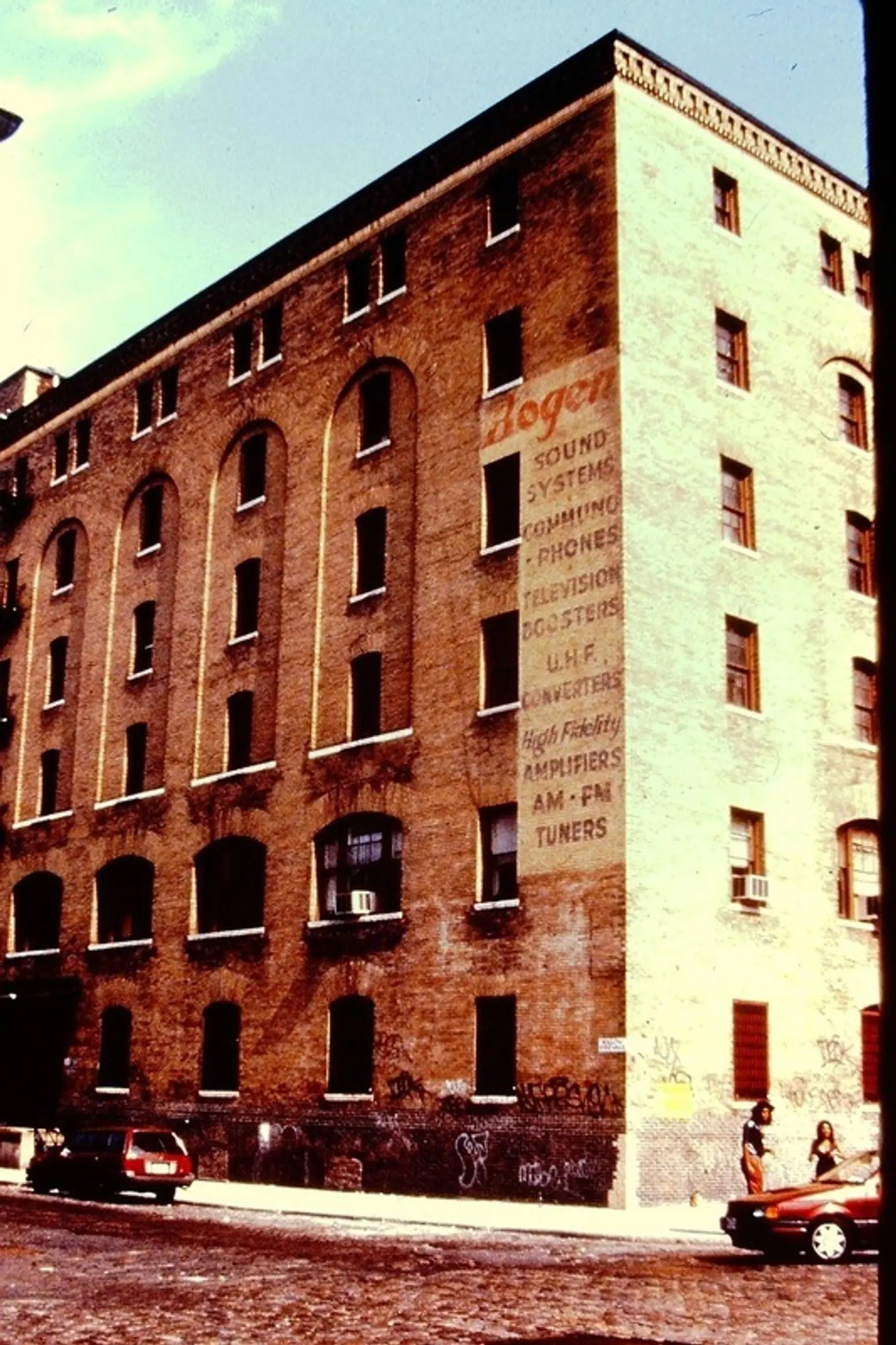
↑ The south side of 29-35 Ninth Avenue ca. 1995, which shows the graffiti and faded painted signs that used to be found on buildings throughout the area.
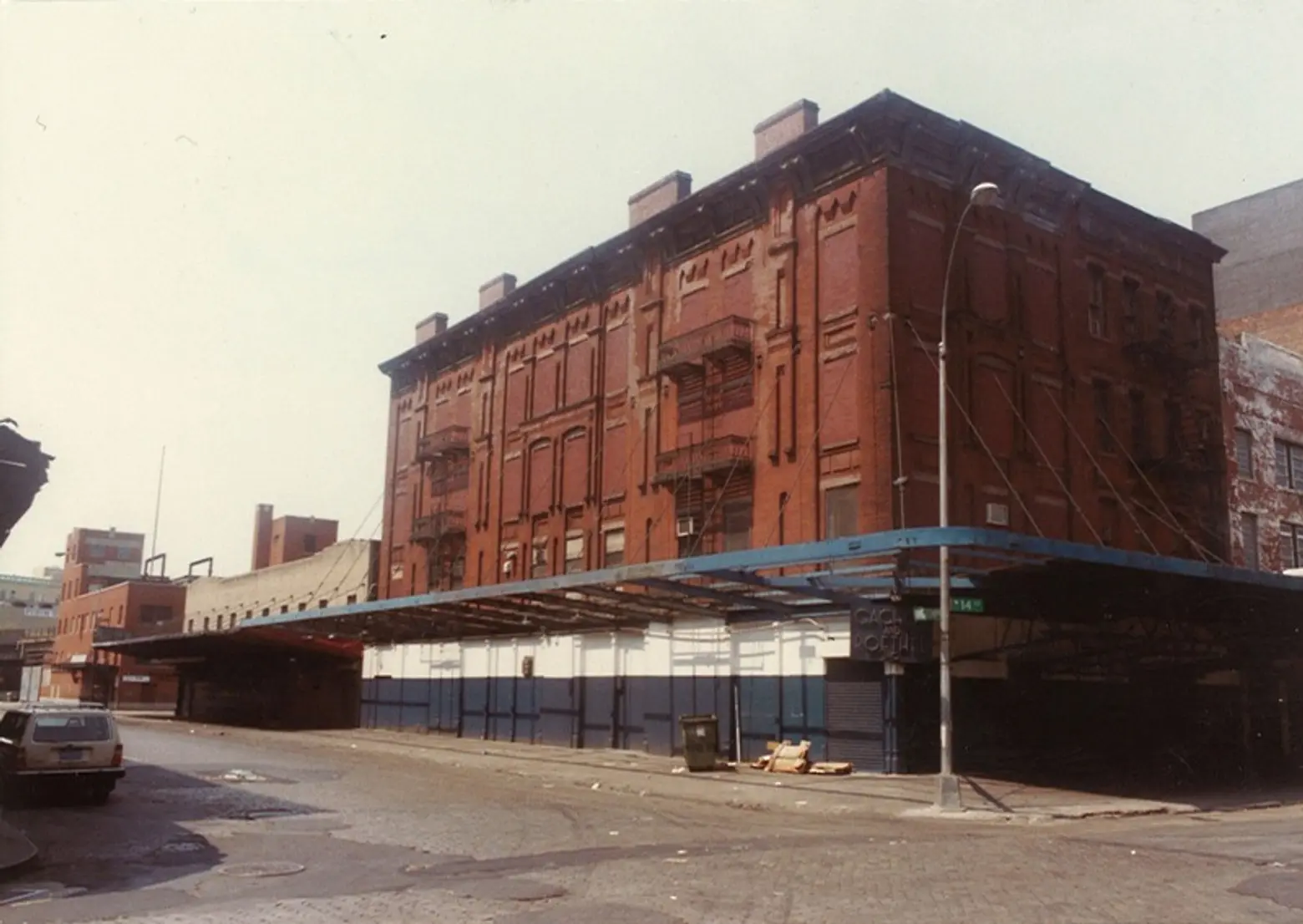
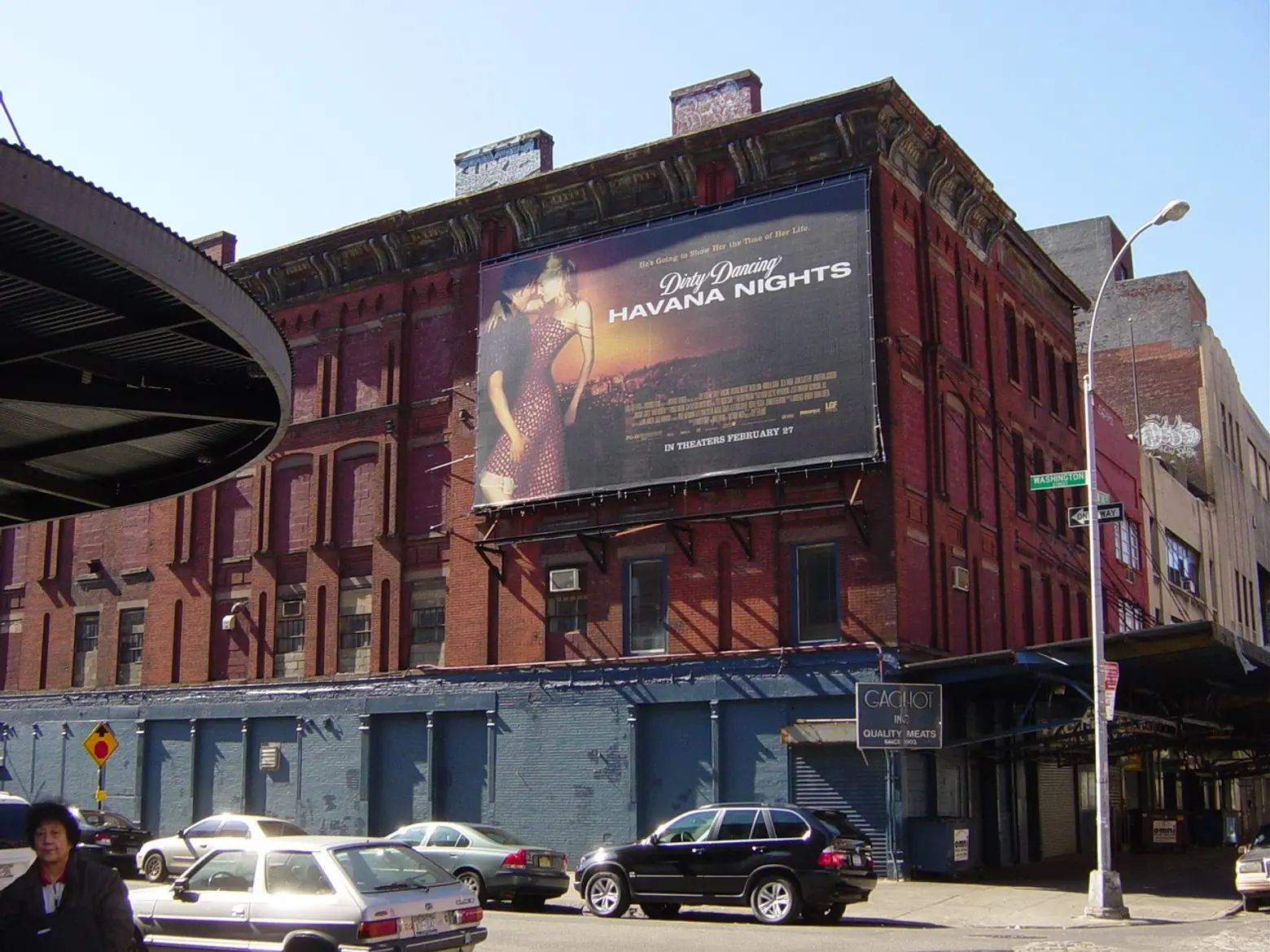
↑ 440 West 14th Street, the former Gachot Meats Building that is now the Diane von Furtsenberg store and headquarters. Ca. 1995 (top) and 2004 (bottom).
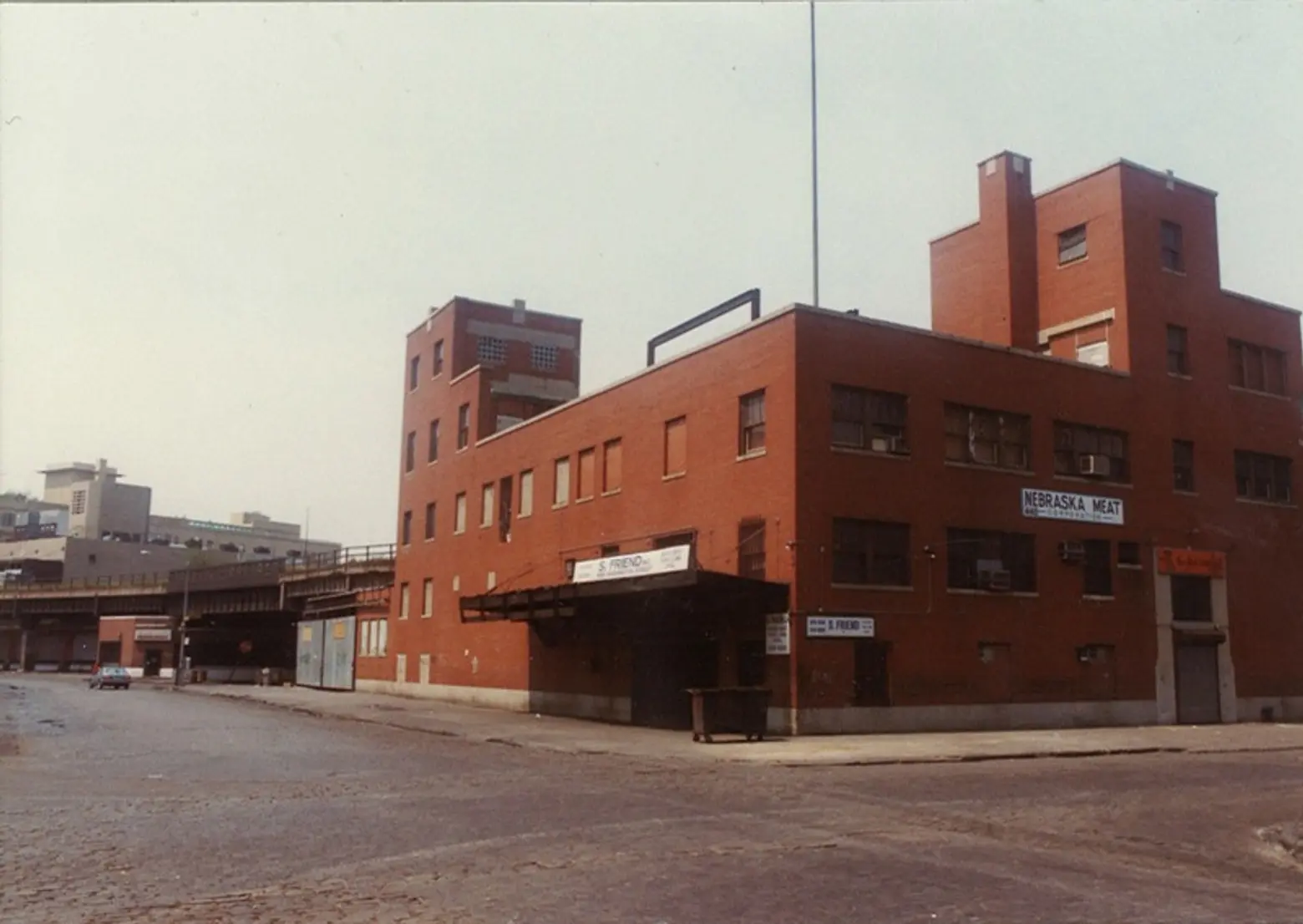
↑ The Nebraska Meats building in 2000, now the site of the Standard Hotel (In 2002, plans for a 450-foot-tall tower here were thwarted.)
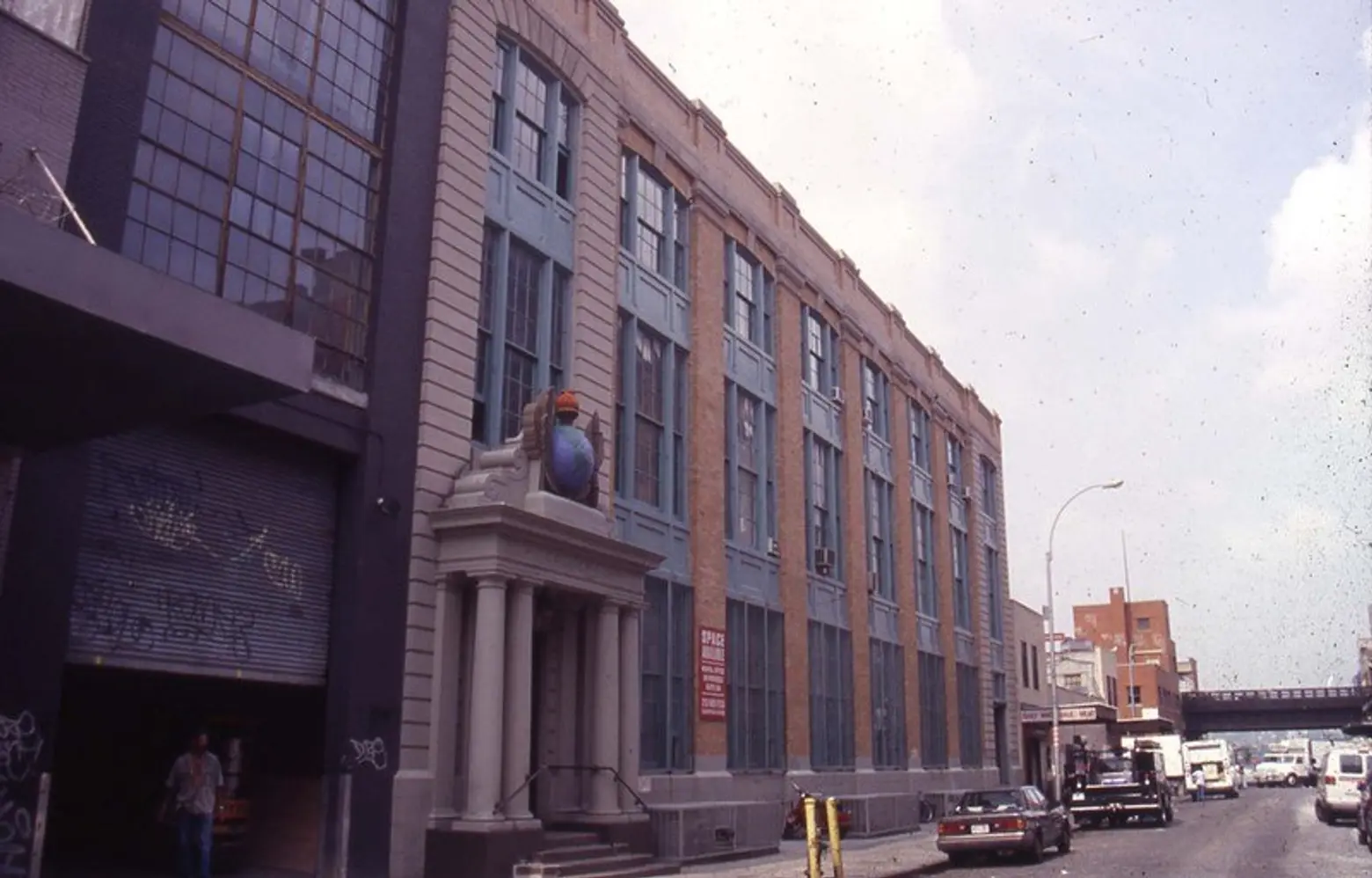
↑ The P.F. Collier Building and Annex at 416 West 13th Street ca. 2000. The famous magazine was published here. After graduating from Harvard in 1917, e.e. Cummings came to work here for the famous magazine and during this time wrote “Buffalo Bill’s defunct,” one of his earliest and most famous poems. The building still looks very much the same today.
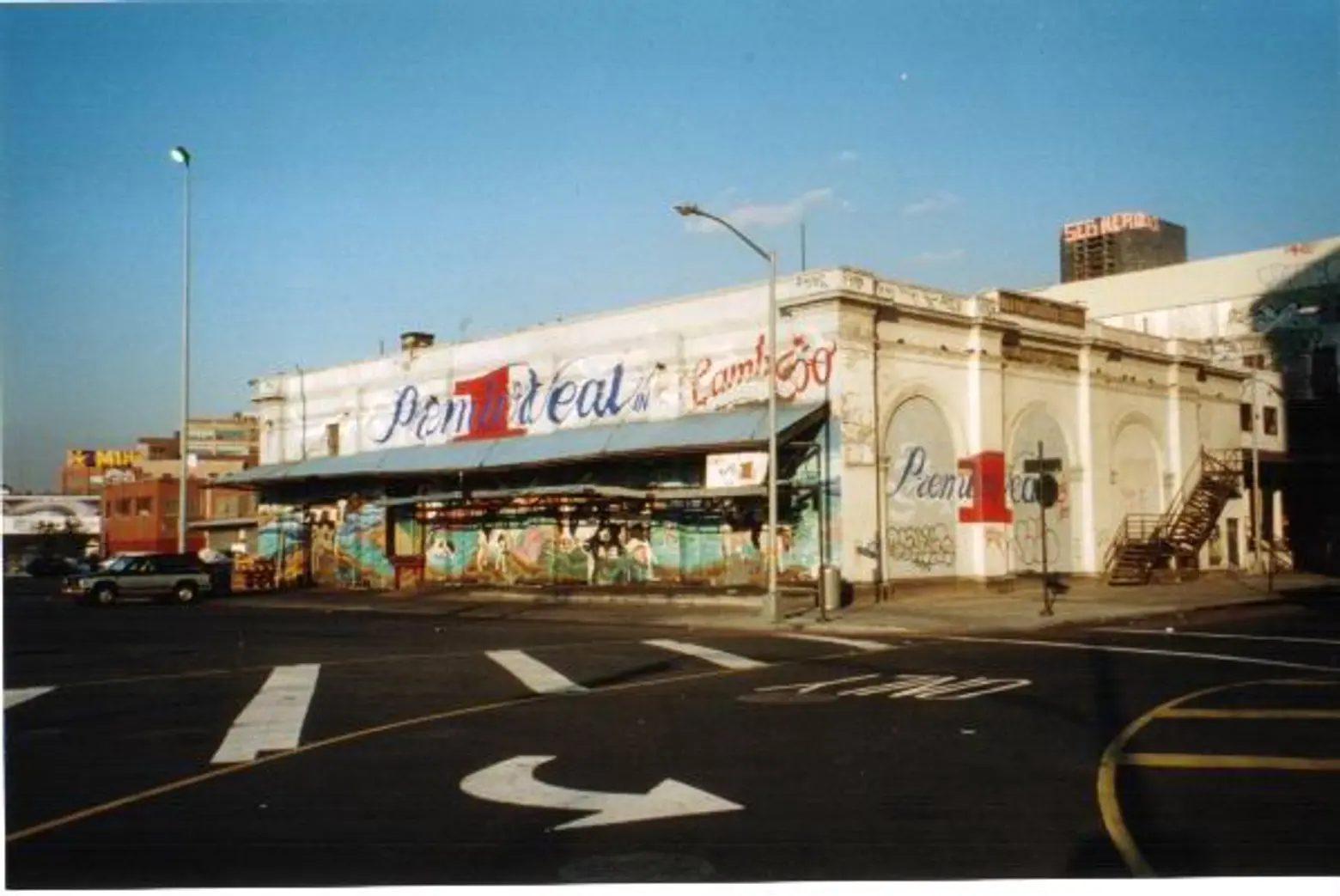
↑ The Gansevoort Pumphouse at Gansevoort Street and Washington Street in 2000, now the site of the Whitney Museum (the full history on this here).
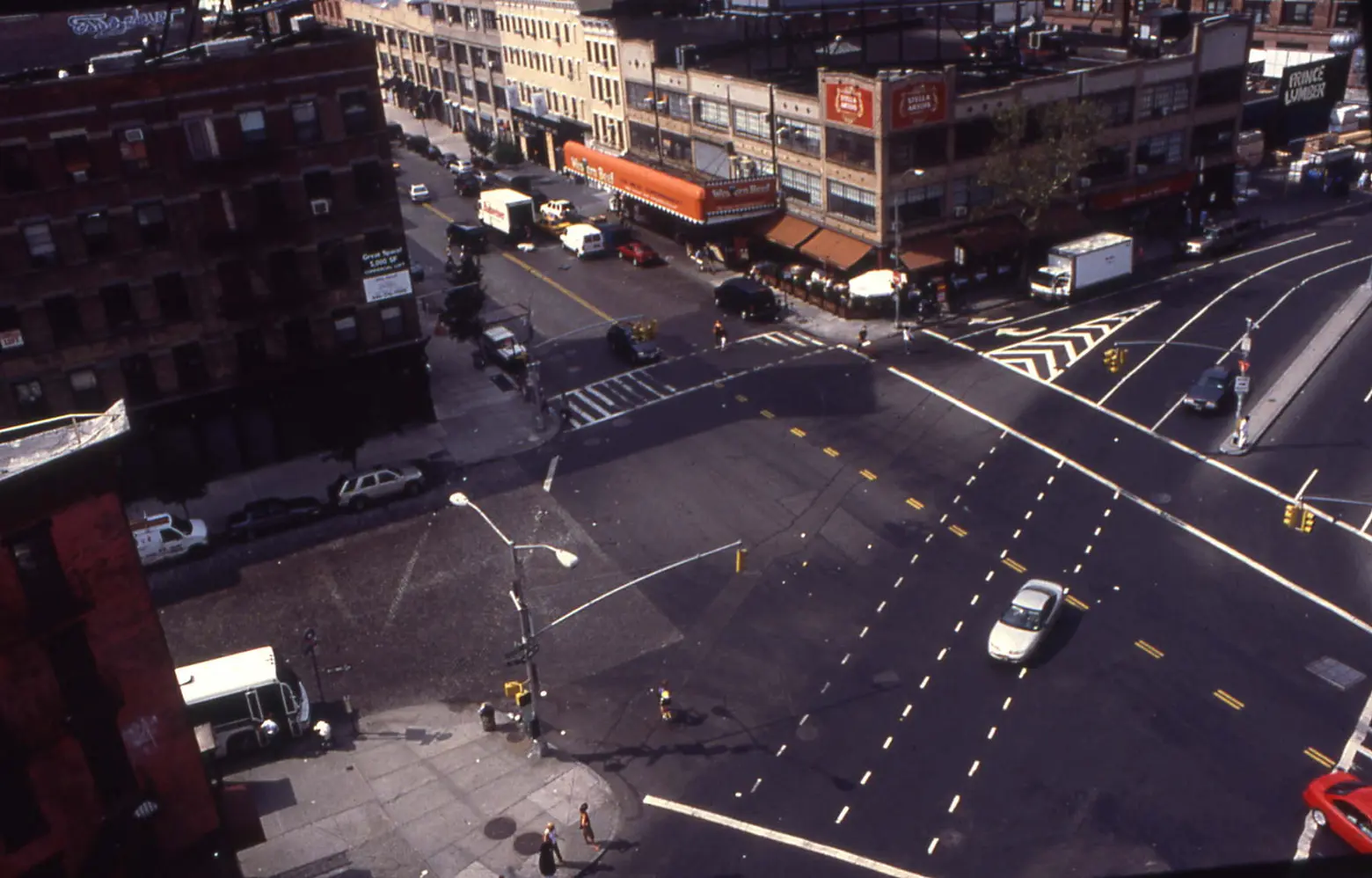
↑ 14th Street and 9th Avenue in the early 2000s.
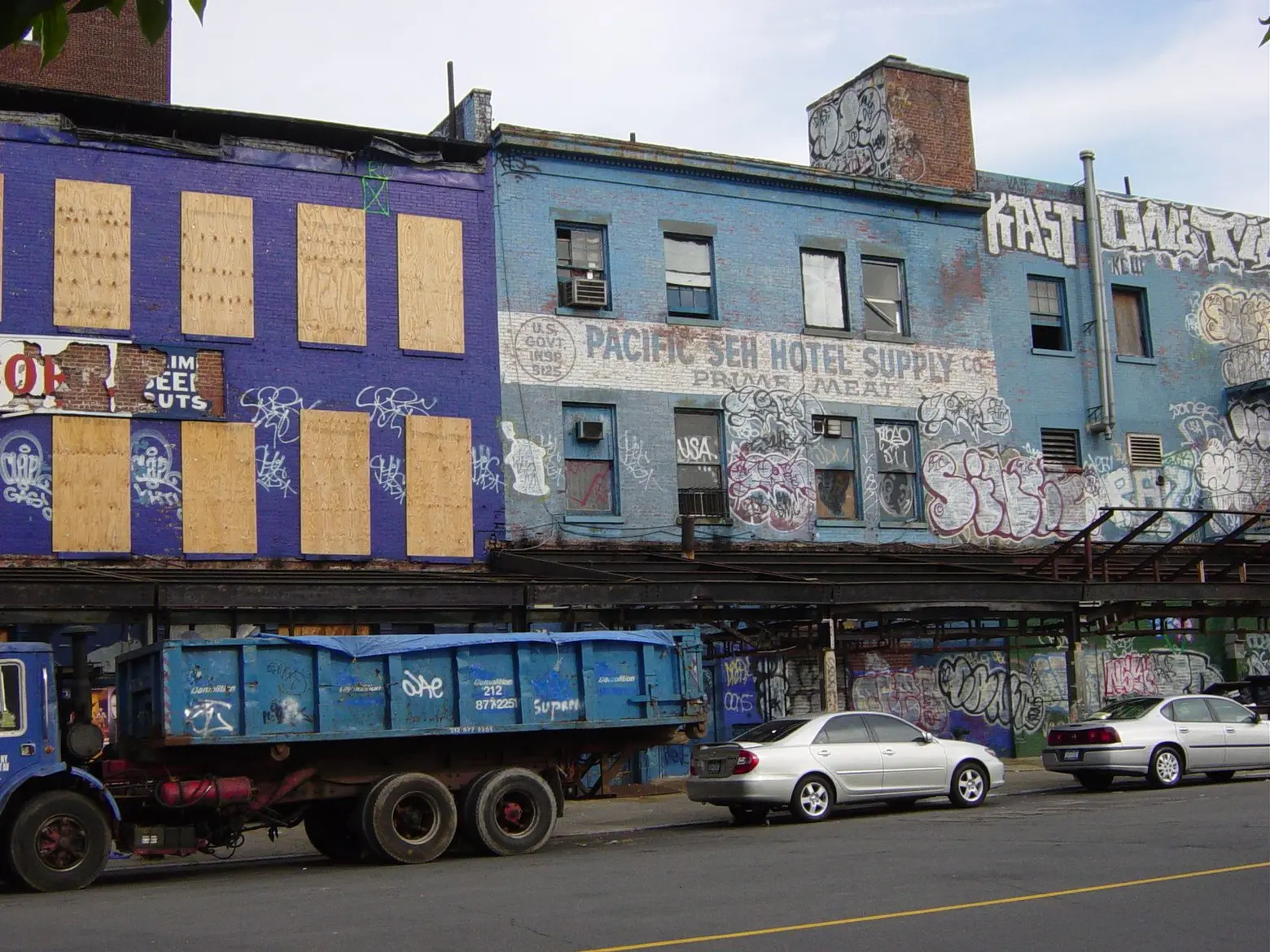
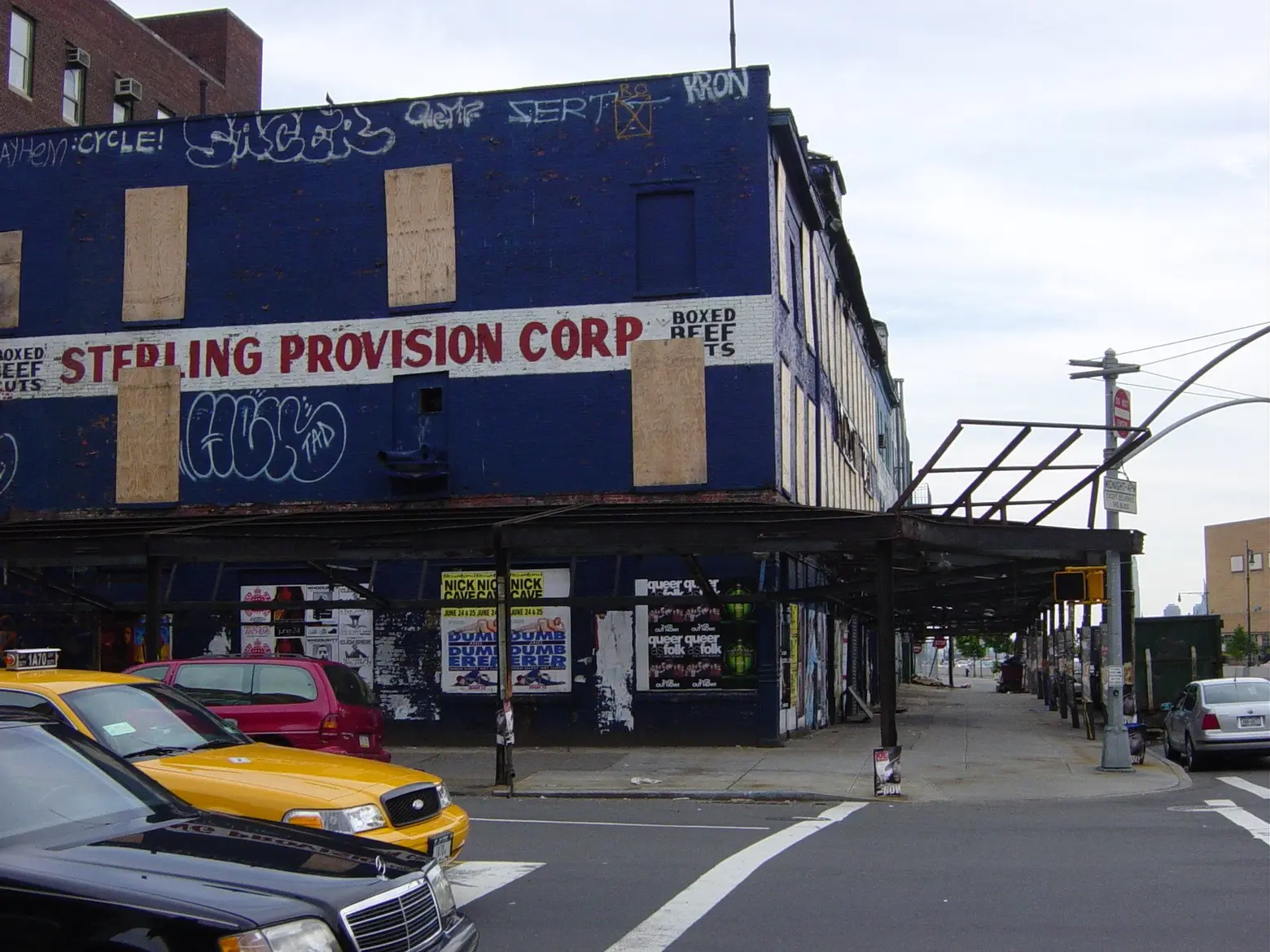
↑ 14th Street and 10th Avenue in 2003.
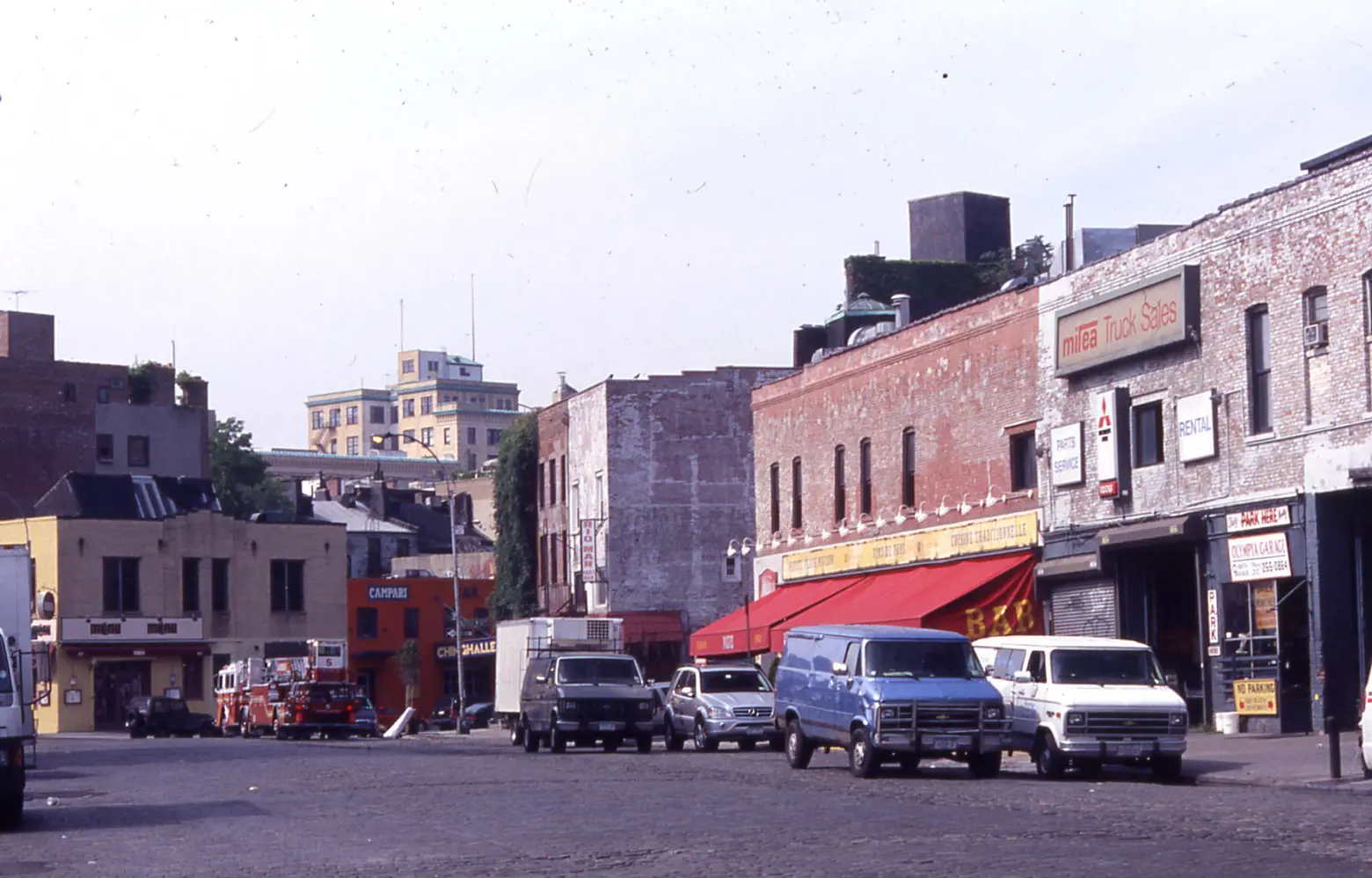
↑ Looking south toward Gansevoort Plaza ca. 2000.
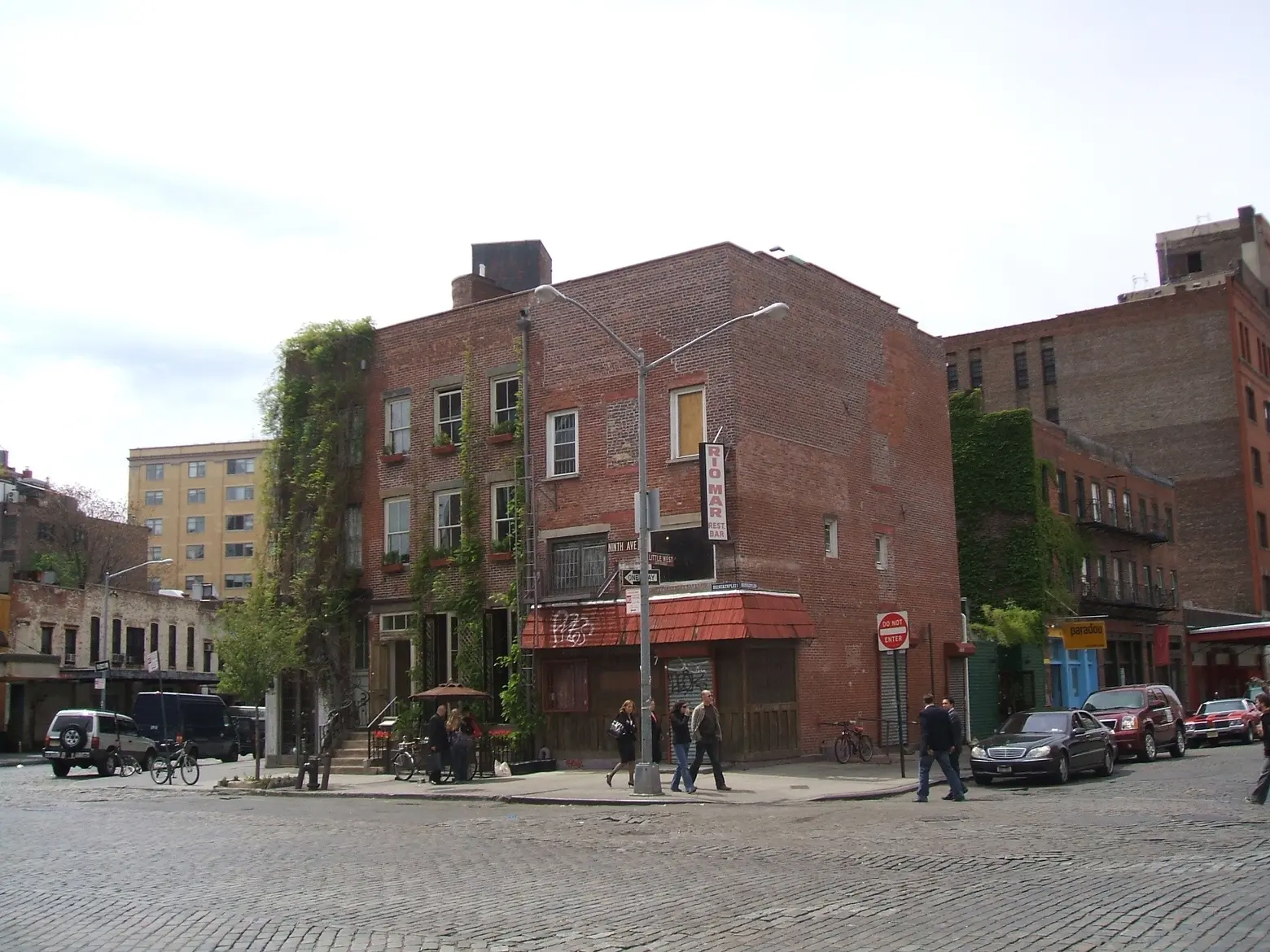
↑ Gansevoort Plaza in 2006, which looks basically the same today.
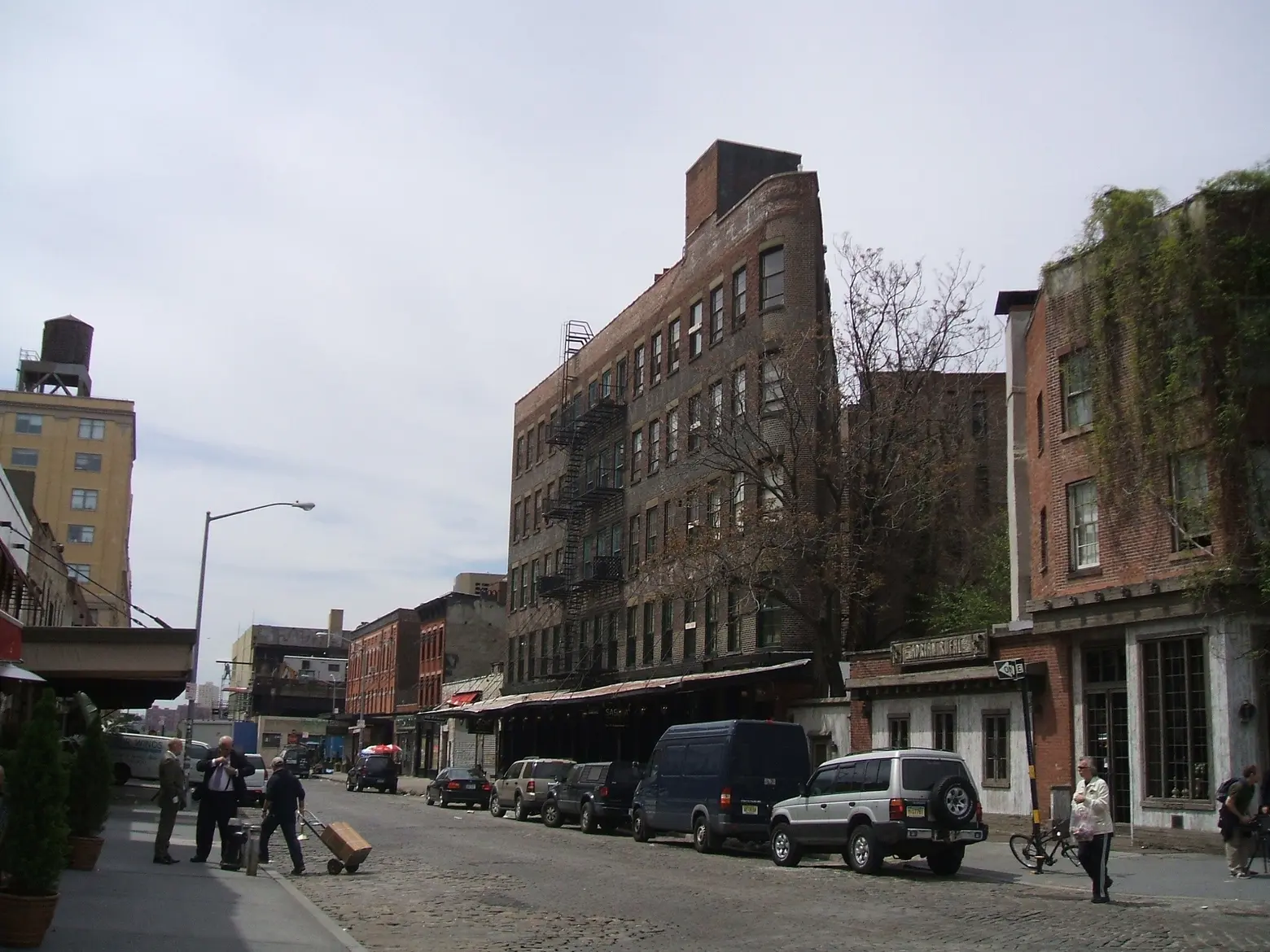
↑ 55 Gansevoort Street in 2006. It’s largely unchanged from this image ten years ago or even from Berenice Abbott’s iconic photo of it from 1936.
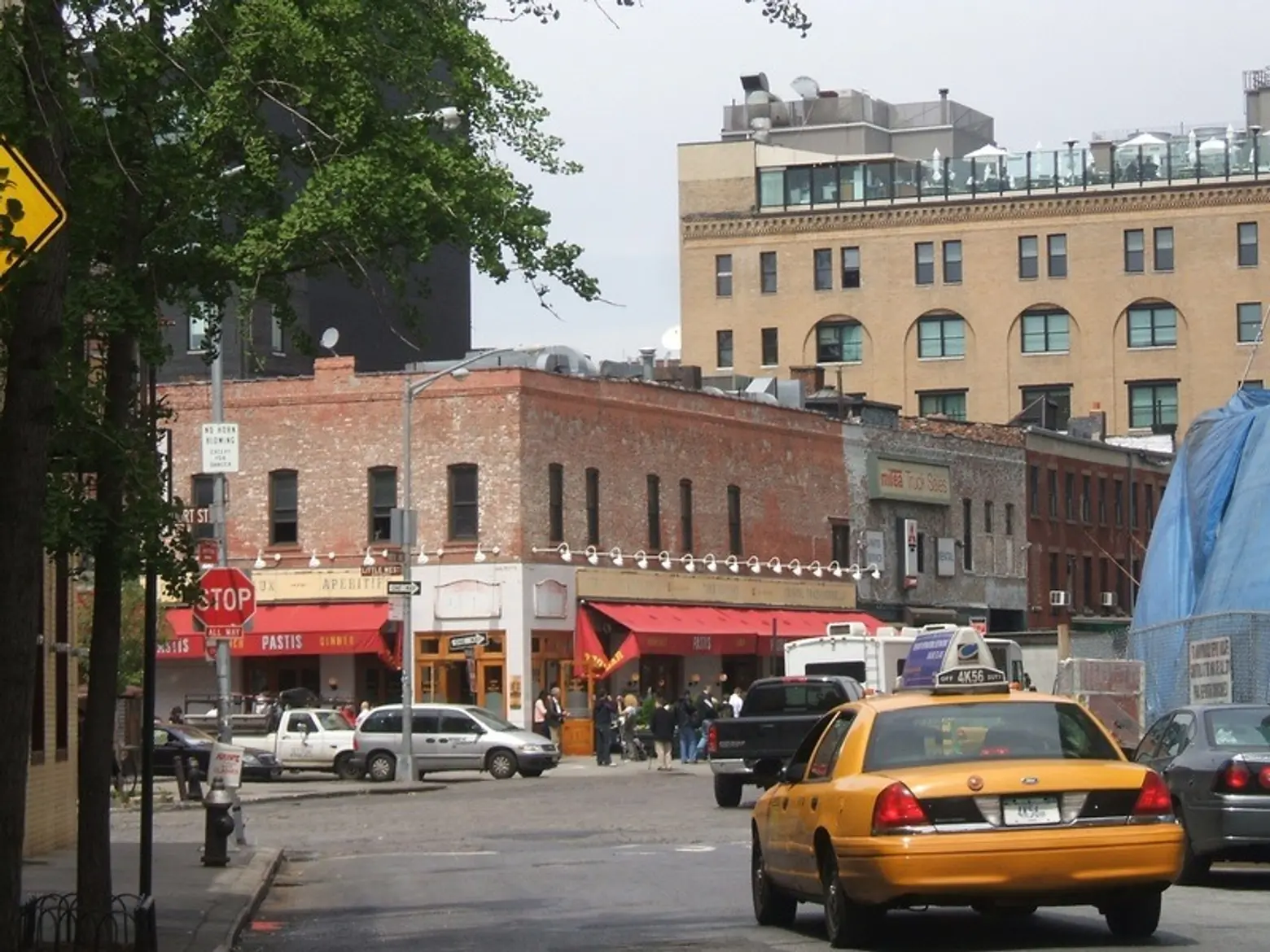
↑ 9 9th Avenue, the former home of Pastis, in 2006. Restaurateur Keith McNally opened the French bistro in 1999 before the area had gentrified, but it later morphed into a hot spot for celebrities. The building was purchased in 2014 and after much back and forth with the LPC, a glass addition was added to the top of the building.
You can look through GVSHP’s entire Meatpacking District collection here and all their archival images here.
RELATED:
- The Meatpacking District: From the Original Farmers’ Market to High-End Fashion Scene
- VIDEO: RuPaul Takes Us Around the 1980s Meatpacking District and the Jane Hotel
- Is the Meatpacking District the Next Midtown?
All photos © Greenwich Village Society for Historic Preservation
Get Inspired by NYC.
Leave a reply
Your email address will not be published.




















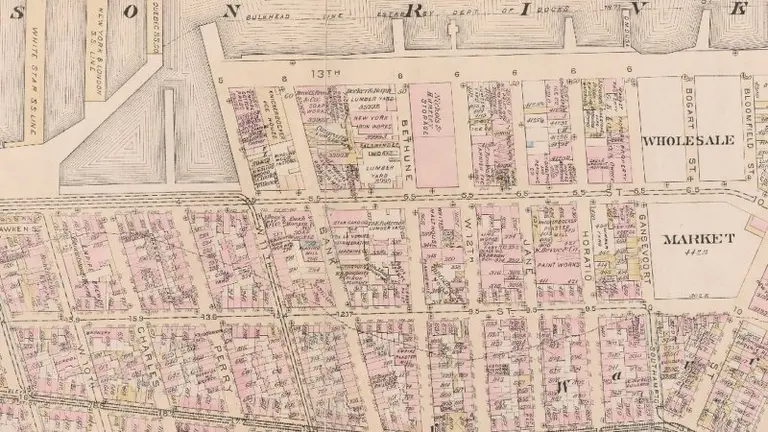
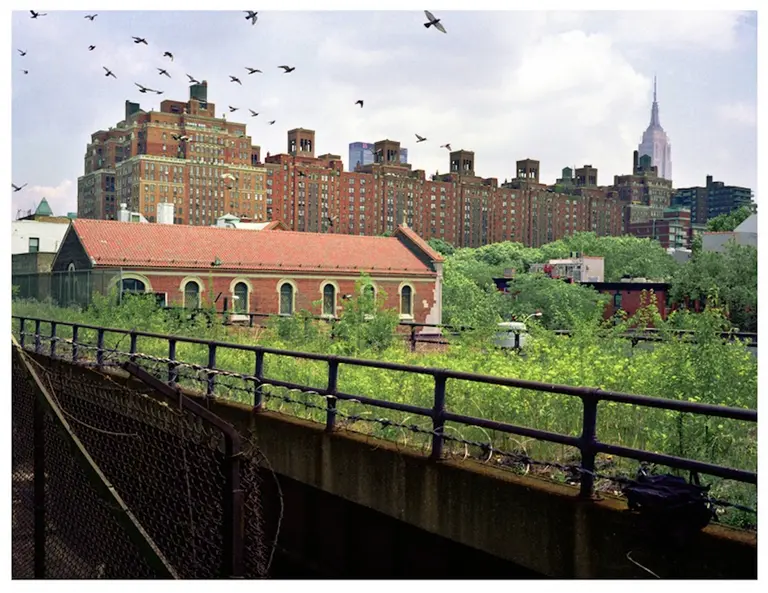
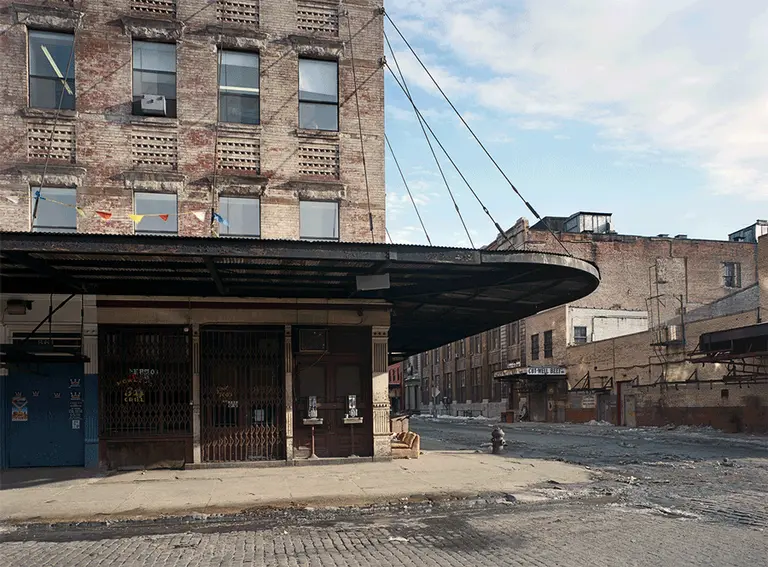
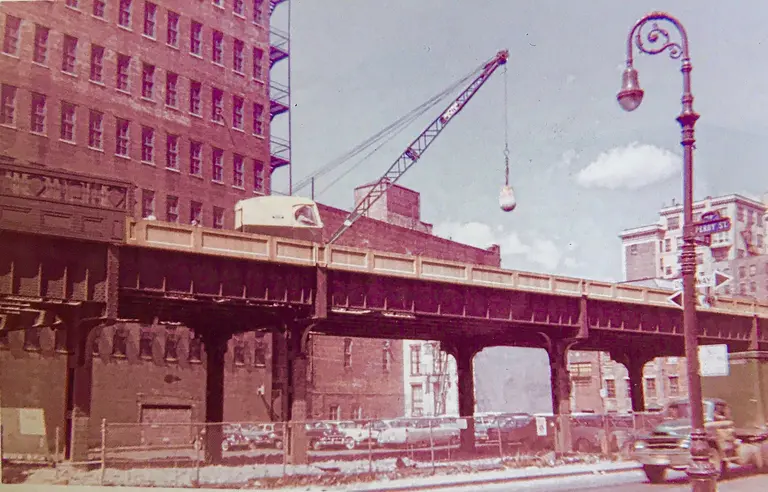
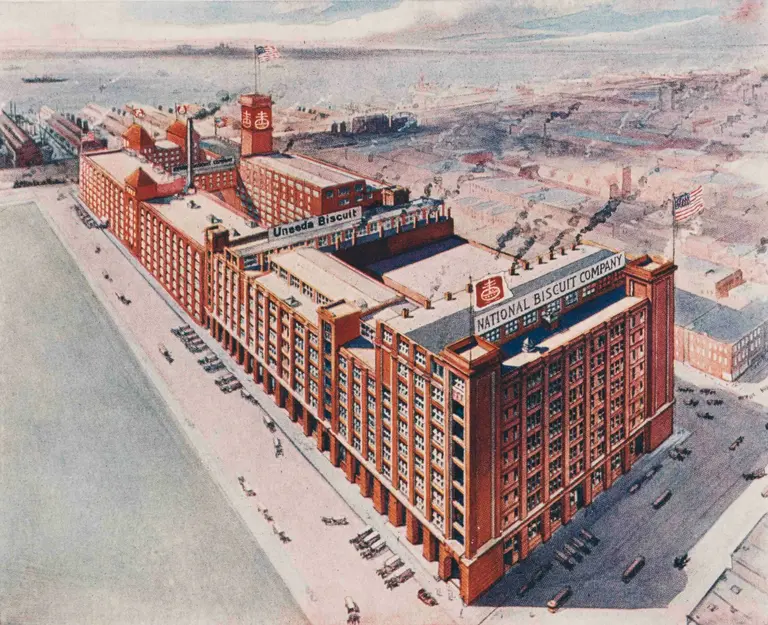
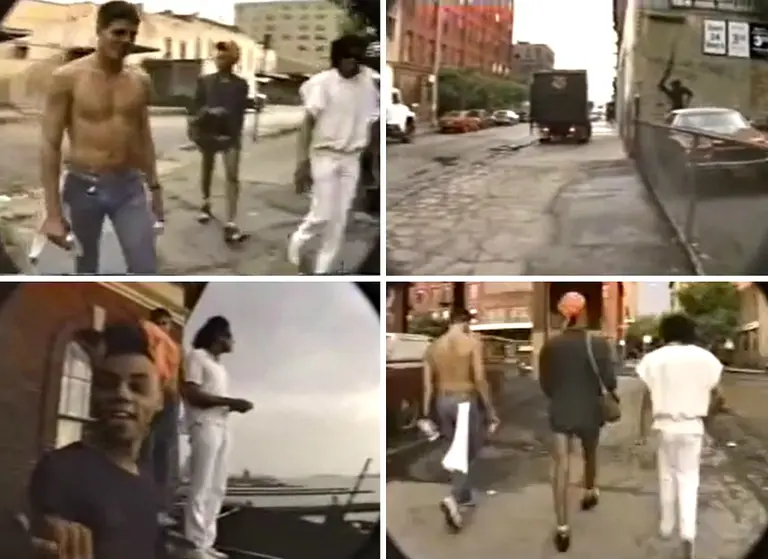





















My mom shared an artists loft at 32 Gansevoort Street back in the ’60’s. I used to meet her after school, walk through the carcasses to get to the 3rd story walk up. I have to chuckle now to see what it has become.